#2 August 1873
Explore tagged Tumblr posts
Text












The Clay Street Hill Railroad began operating the first cable car in San Francisco’s famous cable car system on August 2, 1873 (or August 1, 1873).
#Clay Street Hill Railroad#first cable car#began operating#2 August 1873#1 August 1873#2017#summer 2012#street scene#architecture#travel#cityscape#2008#Powell Street#too touristy#never drove in one#vacation#tourist attraction#San Francisco#California#anniversary#US history#public transport#landmark#West Coast#Hyde Street Pier#USA#original photography
3 notes
·
View notes
Text
Writing Prompt: The First Lines
Choose one of the first lines of these literary works and either create a new poem/story, or continue rewriting the story...
Happy families are all alike; every unhappy family is unhappy in its own way. —Leo Tolstoy, Anna Karenina (1873)
If you really want to hear about it, the first thing you’ll probably want to know is where I was born, and what my lousy childhood was like, and how my parents were occupied and all before they had me, and all that David Copperfield kind of crap, but I don’t feel like going into it, if you want to know the truth. —J. D. Salinger, The Catcher in the Rye (1951)
In my younger and more vulnerable years, my father gave me some advice that I've been turning over in my mind ever since. —F. Scott Fitzgerald, The Great Gatsby (1925)
It was a bright cold day in April, and the clocks were striking thirteen. —George Orwell, Nineteen Eighty-Four (1949)
It was a pleasure to burn. —Ray Bradbury, Fahrenheit 451 (1953)
It was a queer, sultry summer, the summer they [electrocuted the Rosenbergs], and I didn’t know what I was doing in New York. —Sylvia Plath, The Bell Jar (1963)
I was born twice: first, as a baby girl, on a remarkably smogless [Detroit day of January 1960]; and then again, as a teenage boy, in an emergency room near [Petoskey, Michigan, in August of 1974.] —Jeffrey Eugenides, Middlesex (2002)
Mama died today. Or yesterday maybe, I don’t know. —Albert Camus, The Stranger (1942)
Many years later, as he faced the firing squad, [Colonel Aureliano Buendía] was to remember that distant afternoon when his father took him to discover ice. —Gabriel García Márquez, 100 Years of Solitude (1967)
"Where's Papa going with that ax?" —E. B. White, Charlotte's Web (1952)
If this writing prompt inspires you in any way, please tag me, or send me a link. I would love to read your work!
More: The Last Lines (pt. 1) ⚜ (pt. 2) More: Writing Prompts
#writing prompt#writing inspiration#writing exercise#spilled ink#dark academia#poetry#literature#writeblr#writers on tumblr#poets on tumblr#creative writing#writing prompts#light academia#quotes#lit#booklr#books#bookblr#writing reference#writing ideas#writing inspo#writing resources#leo tolstoy#jd salinger#f scott fitzgerald#george orwell#ray bradbury#sylvia plath#jeffrey eugenides#albert camus
213 notes
·
View notes
Photo

The German invasion & occupation of Northern France, 1870-1871
« Grand atlas de l’histoire de France », Autrement, 2011
via cartesdhistoire
65 notes
·
View notes
Text

Franz Xaver Winterhalter (German, 1805-1873) Princess Francisca of Brazil, 1844 Palace of Versailles Dona Francisca (2 August 1824 – 27 March 1898) was a princess of the Empire of Brazil (as daughter of Emperor Dom Pedro I, who also reigned as King Dom Pedro IV of Portugal, and his first wife Maria Leopoldina of Habsburg), who became Princess of Joinville upon marrying François d’Orléans, son of the French king Louis Philippe I.
#real people#princess#royalty#royal#Franz Xaver Winterhalter#German#German art#Germany#1844#1800s#art#fine art#european art#classical art#europe#european#fine arts#oil painting#europa#female portrait#female#portrait#brunette#woman#black eyes#Winterhalter#world history#historical art#historical painting#Habsburg
36 notes
·
View notes
Note
How many presidents have had both of their parents alive when they were president?
Three Presidents have had both parents alive when they became President:
•Ulysses S. Grant Grant was the first President with both of his parents alive at the time of his inauguration. His father, Jesse Root Grant, died on June 29, 1873 during Grant’s second term. His mother, Hannah Simpson Grant, survived both of his terms and died two years before he did, on May 11, 1883. •John F. Kennedy Not only were both of JFK’s Presidents alive when he became President, but they are the only parents of a President who both outlived him. JFK was assassinated in 1963. His father, Joseph P. Kennedy Sr., died in 1969, and his mother, Rose Fitzgerald Kennedy died in 1995 at the age of 104. •George W. Bush Both of Bush’s parents were alive when he took office and survived his entire two-term Presidency. His father, former President George H.W. Bush, died on November 30, 2018, just six months after the death of his mother, Barbara Bush, in April 2018.
Several Presidents have had either their father or mother still alive when they became President:
FATHER •John Quincy Adams: The first son of a President to be elected President himself was also the first President whose father was still alive at the time of his inauguration. John Adams died July 4, 1826, a little over a year into JQA’s Presidency. •Millard Fillmore: Nathaniel Fillmore lived through his son’s entire Presidency (1850-1853) and died in his 90s during the Civil War, on March 28, 1863. •Warren G. Harding: Harding’s father, George Tryon Harding, lived through his son’s entire Administration and died on November 19, 1928. Harding, who died in office on August 2, 1923, was the first President who was outlived by his father. •Calvin Coolidge: Not only did Coolidge’s father, John Calvin Coolidge, live to see his son become President, but he actually administered the oath of office. Coolidge, the Vice President at the time, was visiting his father when President Harding died in office and the elder Coolidge, a notary public, administered the Presidential oath at the family home in Vermont. Coolidge’s father died on March 18, 1926 during President Coolidge’s second term.
MOTHER •George Washington: Mary Ball Washington died August 25, 1789, a little less than four months after his first inauguration. •John Adams: Susanna Boylston Adams died April 21, 1797, just under two months after Adams became President. •James Madison: Eleanor Conway Madison lived through both of her son’s terms as President (1809-1817) and died February 11, 1829 at the age of 98. •James K. Polk: Polk was the first President who didn’t outlive his mother. She died on January 11, 1852, almost three years after Polk left office and died. •James Garfield: Garfield’s mother, Eliza Ballou Garfield, lived to see him become President and die in office. She died on January 21, 1888, almost seven years after he was assassinated. •William McKinley: McKinley’s mother, Nancy Allison McKinley, lived to attend her son’s first inauguration, but died several months later, December 12, 1897. •Franklin D. Roosevelt: FDR’s mother, Sara Delano Roosevelt, lived to see her son inaugurated three times. She died during her son’s third term, on September 7, 1941. •Harry S. Truman: Truman’s mother, Martha Young Truman, lived to see her son succeed to the Presidency in April 1945. She died during his first term, on July 26, 1947, at the age of 94. •Jimmy Carter: Lillian Carter lived through her son’s entire Presidency and was even sent to represent him at events overseas several times, which made her a celebrity in her own right during his Presidency. She died on April 30, 1983, two years after Carter left the White House. •George H.W. Bush: Bush’s mother, Dorothy Walker Bush, lived to see her son become President. She died on November 19, 1992, two weeks after her son lost his bid for re-election. •Bill Clinton: Virginia Cassidy Kelley, Clinton’s mother, lived to see him become President but died less than a year later, on January 6, 1994.
#Presidents#History#Presidency#Presidential History#Presidential Stats#Presidential Data#POTUS Stats#POTUS Data#First Families#Presidential Parents#Parents of the Presidents#Fathers of the Presidents#Mothers of the Presidents#Presidential Families
11 notes
·
View notes
Text
The Pregnant Resident (Andrew DeLuca x Alex Karev’s Sister Imagine)
Previous Part Here
Age Rating: 12+
Chapters: Four of Four
Fandom: Grey’s Anatomy
Ship: Andrew DeLuca x Amber Karev (Alex Karev’s Sister)
Canon Episode: Season 19 Episode 2
Summary: After his surgery Andrew finds Amber passed out in a gurney in the middle of the hall that makes him worry. Afterwards Amber officially starts maternity leave and says a final word to the interns.
PS: There's some Season 1 Bailey vibes at the end lol.
Words: 1873
August 13th, 2022
Andrew DeLuca exhales deeply taking off his navy-blue constellation pattern scrub cap after finishing an emergency splenectomy on one of the car accident victims. The pit has been cleared and all the major injuries were sent to a private room to recover. He thinks about how stressed and tired Amber must have been after working nonstop in the ER for 18 hours.
He looks at his watch and sees it’s 2 am which means he and Amber need to clock out. The hallway is mostly empty as he makes a left and sees Amber on her side on the gurney, with her eyes closed looking unresponsive. The sight alarms him causing him to run towards her and shake her arm.
“Amber.” She doesn’t wake up making Andrew worry and shake her harder, “Amber!”
Amber groans tired and opens her weary eyes to see her husband exhale in relief at her response, “What? What is it? What are you doing here?”
“I just got off a surgery and I was about to look for my pregnant wife so we can clock out and get a good nights rest.” The tone in his voice makes it clear to Amber he has reached his limit with her working in her condition, “Instead I find my wife passed out in a gurney in the middle of the hall looking dead.”
Amber sighs, “Don’t be dramatic you know I was in the pit and handling the trauma.” Amber gets off the gurney and groans in pain as her feet hit the floor causing her husband to worry and put his hands against her back and belly.
“What is it? Are you okay?”
“It’s my feet, it’s the damn shoes I’m fine. Now let me go I need to check on the interns make sure they didn’t screw up so bad again.” Amber moves to walk away causing Andrew to look up at the ceiling frustrated.
“Amber!” She stops at the sharp tone she never hears from Andrew and turns to face him. She sees the worried look on his face that accompanies the stern voice, “You are not fine. You look tired, you look exhausted I can see it, we all see it. You’ve been on your feet all day and all night. Any one person would feel like hell right after and they wouldn’t have to be pregnant. You know I’m right so don’t try to pass it off as me being dramatic.”
Amber sighs, “…Fine it’s taking a lot for me to put just one foot in front of the other and I am running on ginger ale and beef jerky I sneak inside my coat.”
“Which is why maternity leave was invented.” Andrew points out in seriousness to Amber’s annoyance, “Hey look at me.” Amber looks up at her husband who looks at her tenderly, “I love you and if something happens to you or this child that would be the thing that breaks me.”
Amber’s expression softens at that confession, “…I have spent my whole life working towards a successful career all on my own. I was a freshman in high school working two jobs, saving every dime that I had so I could get out of foster care. There was no graduation just a cap and gown on the first bus to college. And now I am the chief resident at one of the top hospitals in the nation. And when I pass my boards, hospitals will be calling me offering me a peds fellowship spot. If I take a leave I’ll lose my job and a chance at being a good role model for my daughter. I can’t be a disappointment to her like my mom was for me.”
Andrew nods understanding, “I get that and I get why your holding off on this. But if you keep going at it and overexerting yourself your not gonna have a daughter to be a role model for. This isn’t just about your goals, not anymore, right now this is about her. This is about our baby.”
Amber looks more convinced at that and presses her lips together to think.
“He’s right and you know it.” Amber turns to find Alex approaching her looking concerned for her as well.
The blonde chief resident snorts at what’s happening in front of her, “It’s never a good sign when the two of you agree on something when it concerns me.”
“It shocks me too trust me.” Andrew says, amused, as Alex walks up to them.
“Now I wouldn’t normally get in the middle of you two but when I found you passed out here on the gurney half an hour ago I realized it takes two men to settle down a stubborn bull.” Amber raises an eyebrow at the comparison as her brother continues, “Now I talked to Chief Grey, and she agreed that you need to start your maternity leave. Your spot will still be there when you get back and until then Schmitt will be the interim chief resident.”
“You replaced me with Schmitt?” Amber asks offended, “What did I do to make you hate this much?”
Alex grins, “Schmitt has been shown to be as hardworking as you and he juggles the duties of being one of the few senior residents quite well given the circumstances. And he would be too scared to fight against you for the position permanently.”
Amber hums in approval, “And they say I’m the evil genius of the family.” Andrew smiles at that behind her.
“So when does my lovely and beautiful wife start bed rest?”
“Right now.” Alex states causing Amber to groan, “And this is from me and Chief Grey personally so listen closely, you’re going home and you’re gonna stay home. I don’t want to see you back here until you’ve given birth to this child. Understood?”
“Is the alternative you and my husband hogtying me to the hood of my car?”
“Yes.” The men say in unison causing Amber to purse her lips.
“Fine I understand.”
Alex relaxes a bit, “Good. Relax, kick your feet up, let DeLuca dote on you. You more than deserve it.”
Amber grins up at her brother taking care of her, “Thanks. I can see why I keep you two around after all.”
Her husband and brother chuckle at that before Amber waddles away from them and walks down the hall causing her husband to call after her.
“Where are you going?”
“To pee and then get a snack!” Amber turns left.
“You just live ten minutes away!” Alex yells out and looks at DeLuca who shakes his head in defeat with a grin before grabbing a discarded wheelchair and following after Amber wheeling it in front of him.
Later
Amber sits in the wheelchair in her red shirt and black sweatpants relaxing as her husband behind her pushes her away from the resident’s lounge and toward the elevator so they can finally go home. Qadri, Parker and Schmitt follow her saying goodbye before she goes.
“You can never go wrong with Netflix.” Qadri says as she counts the cash money in her hands after winning the bet against Schmitt and Parker, “Or Disney Plus if you feel nostalgic for Lizzie McGuire. Also, it might be a great time to pick out a name for the child to be.”
“You haven’t picked out a name?” Parker asks and immediately regrets it as Amber glares at him, “Which is fine, it’s your baby, your timeline. And just to put it out there Casey works for a girl and a boy in case she reidentifies.”
“I have some good Hebrew names that mean beloved or lovely. I’ll text them to you.”
“You know I think I’m gonna miss all of you the second least while I’m in maternity prison.”
Qadri grins knowing her friend is not one for showing affection, “And who’s the least of all?”
“Dr. DeLuca!” Amber groans at the familiar voice of Yasuda who walks up to her carrying a brown paper bag along with Simone Griffith, Lucas Adams, Benson Kwan and Jules Millin who all smile at her.
Qadri snorts at Amber’s face as she faces the interns, “Spoke too soon.”
Griffith starts, “We wanted to come by and say bye before your on bedrest.”
“Also to apologize for using the ‘Q’ word while on shift.” Kwan says embarrassed, “Even though it’s just a superstition.”
“Kwan it’s not even a day with you as my intern and I already hate you.” Andrew grins at Amber’s blunt statement, “I am in no mood for nice words from people whose names I don’t remember so just give me the bag and we’ll call it a night.”
Mika holds out the brown paper bag with a smile, “It’s little things from the gift shop. Stuffed animals apparently touching them helps relieve anxiety and we thought you could use more than we do right now. Also, it could be good toys for the baby, we got all kinds of animals in case she’s picky.”
Amber looks at gift bag numbly not even taking it due to how tired and grumpy she is. Andrew grins at her before taking the bag from Yasuda.
“Thanks.” Andrew sees the elevator doors opening and enters backwards wheeling Amber in, “Okay my love, are you ready to be pampered like a queen?”
“As long as there’s a bed and I can spread across it like a starfish I’m good.”
Qadri holds out the cash for her to take, “Here I know how much you like cash as a gift so you can get it yourself. It’s from the people you like a little more than the interns.”
Amber takes the cash and mumbles thanks. Qadri nods and steps away with her friends. The interns face the elevator and are about to walk away as it closes until Amber stops it with her foot causing it to open again. Andrew looks on confused as well as the interns who freeze in place as their chief resident faces them with a hard lined mouth and narrow eyes.
“I may be eleventy months pregnant.” Amber starts, “I may be on bed rest. I may have a sharp pain in both of my hips and breasts but do not think you can slack off in my absence. I will know the second you guys make a mistake so huge it reflects poorly on me and my abilities to keep you all in line. And if that happens, I will rain so much hell on you it will make Hurricane Katrina look like a puddle.” The interns look frozen in fear as Amber makes a final statement, “I am Dr. Amber DeLuca, and I will be back.”
The doors close and the last thing Amber sees is the scared interns before facing the elevator doors. Andrew grins behind her squeezing her shoulder affectionately.
“Do you feel better?”
Amber exhales content, “So much. Now take me home so you can massage my feet and read Stephen King to my belly before I pass out for the next two months.”
“Will do wife.” The elevator doors open and Andrew wheels Amber forward so she can officially start her maternity leave.
#greys anatomy#grey's anatomy edit#grey's anatomy#greysanatomyedit#greysedit#amber karev#andrew deluca#pregnant#pregnancy#headcanon#mine#elizabeth gillies#liz gillies#giacomo gianniotti#season 19#19x02#interns#Season 1 Vibes
11 notes
·
View notes
Text
Tebecca (Tara/Rebecca) Fanfic Master List (New)
ALL OF MY WORKS ON AO3 || MY WRITING ON TUMBLR
UPDATED: 16 August 2024
FLUFF
Easy (General, WC: 1572)
For the first time in her life, Tara Lewis found herself in a relationship that just felt easy.
Kiss and Not Tell (Teen, WC: 1792)
Rebecca gets invited to a BAU Girls' Night and chaos ensues
Going Home (Explicit, WC: 3254)
Tara and Rebecca share their first holiday together. Memories are made, love is abundant, happiness abounds.
Love They Say (Teen, WC: 2463)
At a long overdue BAU Girl's Night, Tara asks for dating advice from JJ and Emily.
Say It First (Mature, WC: 3019)
Three weeks into her new relationship with Rebecca, Tara is suddenly overwhelmed with what can only be described as love-sickness. But to the esteemed Dr. Tara Lewis, having to admit that she'd somehow let herself fall utterly, irrevocably, in love was far more unnerving than any unsub.
Million Reasons [FANVID]
FANVID: Following Tara/Rebecca through their relationship, break-up, and reconciliation (S16-S17)
SMUT
Good Vibrations Pt. 1 (Explicit, WC: 697) Series: CM Kink Bingo 2024
Tara's job calls her out of town frequently, which puts a damper on her new relationship. Good think Rebecca has a creative solution.
Good Vibrations Pt. 2 (Explicit, WC: 1873) Series: CM Kink Bingo 2024
Tara's in Kansas, Rebecca's in DC. Thank god for technology.
Good Vibrations Pt. 3 (Explicit, WC: 1061) Series: CM Kink Bingo 2024
Just because they're not in the same place doesn't mean Tara's girlfriend can't help get her off.
Water Slide (Explicit, WC: 1438) Series: CM Kink Bingo 2024
Rebecca and Tara have an ongoing competition in the bedroom.
Company (Explicit, WC: 4660) OT3: JJ/Tara/Rebecca | Cut to The Feeling
After an extremely stressful week, all Rebecca wants is to do on Friday night is go home to Tara and relax. But when JJ opens the front door, instead of her girlfriend, Rebecca fears those plans are completely ruined. Little does she know, Tara and JJ are about to make sure she has the best night of her life.
The Rush (Explicit, 9235) OT4: JJ/Emily/Rebecca/Tara | Series: The Age of Pleasure
Five months after closing the Gold Star case, JJ, Tara, and Rebecca give Emily a birthday she'll never forget. [Follow-up to 'Do What I Want (Over What's Right) but can be read as a stand-alone]
MULTI-CHAPTER
Do What I Want (Over What's Right) (Explicit, WC: 74,012) Tara/Rebecca, JJ/Emily, Rebecca/Emily | Series: The Age of Pleasure
After Rebecca and Emily have an extremely unexpected and ill-advised one-night-stand, they have to navigate working together while trying to prevent their secret from getting out. Meanwhile, Tara is still holding out hope she and Rebecca can reconcile their differences and get back together. And JJ is struggling to cope after finding out about the website related to her. [Takes place in S17, but only loosely follows canon timeline.]
Fooled Around (and Fell in Love) - Part 3 (Explicit, WC: 218,573) JJ/Tara/Emily, Tara/Rebecca | Series: Fooled Around (and Fell in Love)
When JJ/Tara/Emily decide to buy a house together, Tara volunteers to renovate it into their perfect dream home. In order to follow through on her promise, Tara enlists the help of a general contractor, Beck Wilson -- but Beck's construction skills aren't the only thing that garners Tara's attention. JJ, Tara, and Emily, must find a way to navigate all of the changes in their lives while keeping their relationship afloat. Will unexpected feelings, secrets, and jealousy threaten the foundation of everything they've worked hard to build? A wholesome, queer rom-com, with a healthy dose of polyamory.
Cut to the Feeling (Explicit, WC: 19,377) Tara/Rebecca, JJ/Tara, JJ/Tara/Rebecca
When JJ finds out Tara has a girlfriend, she's surprised when this announcement causes her to feel an overwhelming sense of jealousy. In her attempt to ask Tara about her relationship status, JJ accidentally admits far more than she ever intended, leaving Tara feeling confused and slightly intrigued at the idea of what she and JJ might have had together -- if not for the fact Tara is happily dating Rebecca.
ADDITIONAL CM FEMSLASH FIC RECS:
Past Friday Fic Recs: [Friday Fic Recs - Tumblr] || [CM Fic Recs - AO3 Collection]
My Fanfic Master Lists: [JJ/Emily] || [Tara/Emily] || [JJ/Tara] || [Tara/Rebecca]
2023 Rec Lists: [JJ/Emily] || [Tara/Emily + Other Femslash]
2022 Rec Lists: [JJ/Emily] || [Tara/Emily] || [Other Femslash]
#criminal minds#criminal minds evolution#tara lewis#rebecca wilson#tebecca#criminal minds fanfiction#cm fanfiction#cm fic recs#my writing#cm reference#master list
4 notes
·
View notes
Text
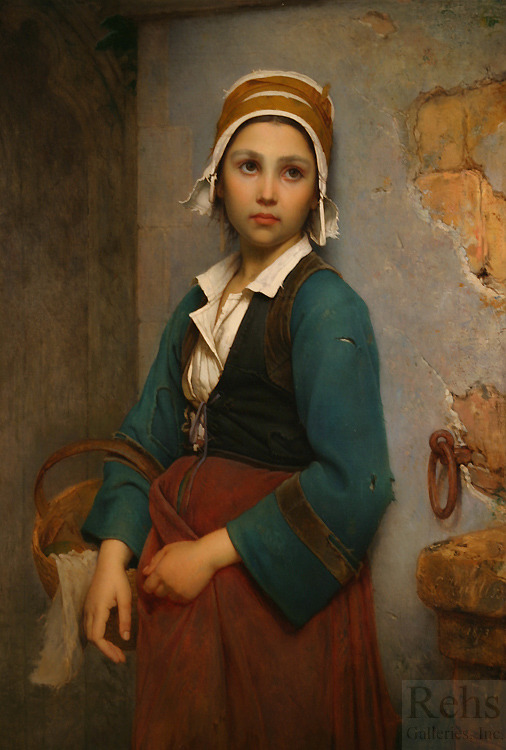
FROM THE SOLD ARCHIVES:
EMILE AUGUSTE HUBLIN
(1830 - C.1891)
Jeune mendiants du Finistère
Oil on canvas
37 1/2 x 25 3/4 inches
Signed and dated 1873
https://rehs.com/Emile_Auguste_Hublin_Jeune_mendiants_du_Finist%C3%A8re.html
#emile hublin#french academic art#academic art#19th century french art#19th century art#genre painting#figurativeart#figure painting#fine art#fineart#work of art#art work#rehsgalleries#workofart#figurative art
34 notes
·
View notes
Text

Edo period egoyomi (picture calendar) for Kyowa 2 (1802) picturing the monthly and seasonal needs for a small mountain village.
...
More Information on Japanese Calendars and Timekeeping
See the previous post here.
...
Japanese Years
Today, most of the world uses the Gregorian calendar, introduced in 1582, to track years of the common era. That calendar's era is based on years since the perceived birth of Jesus: 2023 CE (current era) or AD (anno domini, year of the lord) 2023.
Edo period Japan obviously did not use the Gregorian calendar as its own calendar-keeping was influenced by China, not the west. In fact, Japan did not adopt the Gregorian calendar until 1873 but continues to use era names into the present day.
Japan's system of era names (nengo) originates from China and was permanently adopted in 701 under Emperor Monmu. It has been continuously in use since.
Until the end of the Edo period, era names were decided by court officials and could change frequently. A new era name was usually proclaimed after the ascension of a new emperor, but could also be changed due to some auspicious event or even due to natural disasters.
Since the adoption of era names, most have been in use for fewer than 10 years, sometimes for as short a period as 2 years, and only a handful have been used for periods of more than 30 years.
This website is extremely helpful in converting Gregorian years into Japanese eras, just enter the year!
...
Japanese Months
During the Edo period, the Japanese year was broken down into 12 lunar months of either 29 days (small months) or 30 days (large months) each.
Additionally, a special intercalary month (uru-zuki) had to be added every few years to keep the calendar in sync with the actual change of seasons.
In the modern Japanese calendar, the months are numbered rather than named: ichi-gatsu (first month, January), ni-gatsu (second month, February), and so on, but during the Edo period, monthly names, which date back to the Heian era, were in common use.
(Today, you might still find these old monthly names in poetry.)
Here they are with their western calendar equivalent:
January - mutsuki 睦月 February - kisaragi 如月 March -yayoi 弥生 April - uzuki 卯月 May - satsuki 皐月 June - minazuki 水無月 July - fumizuki 文月 August - hazuki 葉月 September - nagatsuki 長月 October - kannazuki 神無月 November - shimotsuki 霜月 December - shiwasu 師走
...
Japanese Weeks
The western concept of breaking individual months down into 7-day weeks did not exist in Edo period Japan. However, there is a rough equivalent that corresponds to the general concept of weeks: nijushi-sekki, 24 seasonal divisions that break the year down into "weeks" of 15 days each.
They are:
Shokan (small chill) – around January 6 Daikan (big chill) – around January 20 Risshun (start of spring) – around February 4 Usui (rain water) – around February 18 Keichitsu (going-out of worms) – around March 6 Shunbun (spring equinox) – around March 21 Seimei (clear and bright) – 15 days after the spring equinox Koku-u (rain for harvests) – around April 21 Rikka (start of summer) – around May 6 Shoman (half bloom) – around May 21 Boshu (seeds of cereals) – around June 5 Geshi (reaching summer) – summer solstice – around June 21 Shohsho (small heat) – around July 7 Taisho (big heat) – hottest time of the year – around July 23 Risshu (start of autumn) – around August 8 Shosho (keeping out of the heat) – around August 23 Hakuro (white dew) – around September 7 Shubun (the autumnal equinox) – around September 23 Kanro (cold dew) – around October 8 Soko (frosting) – around October 23 Ritto (start of winter) – around November 8 Shosetsu (small snow) – around November 23 Taisetsu (big snow) – around December 8 Toji (reaching winter) – around December 22
More in-depth information about these, along with explanations of why they're called what they're called, can be found here.
...
Japanese Days
Individual named days, such as Monday and Tuesday, as we know them on the western calendar, also did not exist in Edo period Japan.
You wouldn't say "We meet on Wednesday." Instead, you would have used the date, "We meet on the fifteenth day," or perhaps even the phase of the moon, "We meet on the new moon."
Individual Japanese days are also not broken down into 24 equal hours of 60 minutes each.
Instead, people in the Edo period split their days into 12 hours (toki): 6 daytime hours, which were counted from sunrise to sunset, and 6 night-time hours, which were counted from sunset to sunrise.
Naturally, the length of these hours varied not only by time of year (winter daytime hours being obviously shorter than winter nighttime hours) but also by geographical location.
Daytime hours were broken down as follows:
Hour of the Rabbit (begins at sunrise) Hour of the Dragon Hour of the Snake Hour of the Horse (noon) Hour of the Goat Hour of the Monkey
Nighttime hours were broken down as follows:
Hour of the Rooster (begins at sunset) Hour of the Dog Hour of the Pig Hour of the Rat (midnight) Hour of the Ox Hour of the Tiger

From the Seiko Museum.
#history notes#historical notes#history reference#historical reference#history research#historical research#Japanese calendar#calendars#Japanese era names#Japanese hours#are you confused yet?
19 notes
·
View notes
Photo

Franz Xaver Winterhalter (1805-1873, German) ~ Queen Victoria,1843
[Source: https://www.rct.uk/collection/406010/queen-victoria-1819-1901 ]
“In her Journal (13 July 1843), the Queen recorded the progress of this, 'the secret picture' – prepared as a surprise for her husband's twenty-fourth birthday. The plot was successful, as the Queen wrote: 'he thought it so like, & so beautifully painted. I felt so happy & proud to have found something that gave him so much pleasure' (Journal, 26 August, 1843). The painting was hung in Prince Albert's Writing Room at Windsor. Several copies were made in miniature – a particularly suitable format for such an intimate image. The Queen later referred to it as 'my darling Albert's favourite picture' (Journal, 2 January, 1873).”
@nellygwyn this one is for you! with gratitude💜
62 notes
·
View notes
Text
Pt. 1 of my (very belated) chaotic corset making process
so way back when in August 2023, I finally got the motivation to make a corset for historical costume purposes, which I’ve been wanting to do for several years now. Most(and not just more) specifically, I wanted a corset that would have been considered fashionable in ~1875-80, especially in 1879, had an elegant silhouette, and was historically accurate.
There’s this one person on Etsy- ateliersylph- and they’ve got a ton of patterns taken from extant antique corsets they own, as well as some other fun sewing things like corset hooks, so I scrawled through their antique pattern offerings to find something that got as close to my specifications as possible. Unfortunately, there isn’t a corset that they dated to specifically the years I was looking for, but Ref P looked close to what I wanted: it had the curvy silhouette, wasn’t too curvy for my liking but still wasn’t too small proportionally for my hips, extended to ~just below the hip, spoon front-opening busk, was versatile enough to be used for more than just one decade in the Victorian era, and didn't support to only under the nipple. The spoon busk meant that it had to have been made in/after 1873, as that was when that style of busk was invented, and it fell out of fashion by the Edwardian era, so it should probably have been made between 1873- around 1900, and more likely closer to 1873 than 1900. It also didn’t have garters tabs attached to it, which became a thing closer to the Edwardian era. Thus, this was the closest pattern they had for what I was looking for, even without them having a date for Ref P’s original corset. I chose the pdf file option instead of a paper pattern to save money.
I also decided to go with a white-greige-light blue color scheme, so I got some white lace and bias binding and coutil, greige lace and cotton sateen(because silk would be even more expensive), and blue silk thread and ribbons for the back lacing, flossing, and decoration. I won’t lie, Bernadette banner’s adventures in ✨the joys of corset making✨ /s definitely inspired my choice of velvet ribbon threaded through lace as trim. Between the 3 commercially available options for boning nowadays, I (1) didn’t want to use plastic so synthetic whalebone was off the table, and (2) getting a smooth edge on the cut ends of steel boning was much simpler and cheaper than spiral steel boning, which needs caps and a cap-setting tool. However, Like A Fool, I didn’t remember that maybe, just MAYBE, I should have waited until I was able to print out the properly-sized pattern and measure to see what size bones I needed(because there are two different widths used, Apparently) before just purchasing a size that I thought was right, but. ://// so that was fun and not something I realized until I had gotten to the point of actually sewing the bone channels on all the panels, but I’ll come back to that later in another post. I also decided that because I couldn’t see the spoon busks in comparison to my body irl, it would be safer to buy a straight busk and just bend it for the curve, and that I was also going to use small-ass floral metal stamps on the busk loops because busks with decorative patterns on the loops were all sold out online to my knowledge :| this all happened over the course of a week where I was looking up materials online and debating whether spending all that money was worth it, until I said fuck it, I’m gonna make it, and bought everything, which took until ~late August/early September to all arrive. So, to pass the time, I searched up all the YouTube tutorials I had watched before of historical costubers making their own corsets for tips and watched them all again, and also went through ateliersylph’s blog posts for instructions and other resources, most of which are in French so get a google translator if u can’t read it like me lol. I finally got the pattern printed out after like, a week or 2, so after that, I was cutting and pasting it together irl, making mockups, etc. until everything else arrived. :D
3 notes
·
View notes
Photo
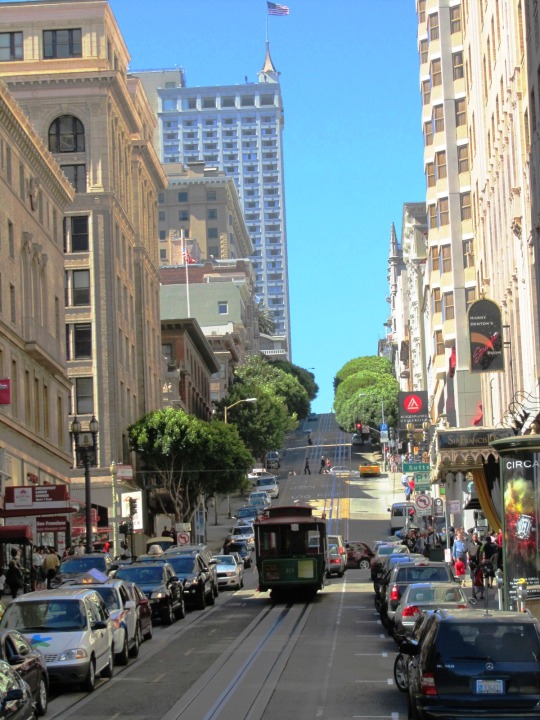


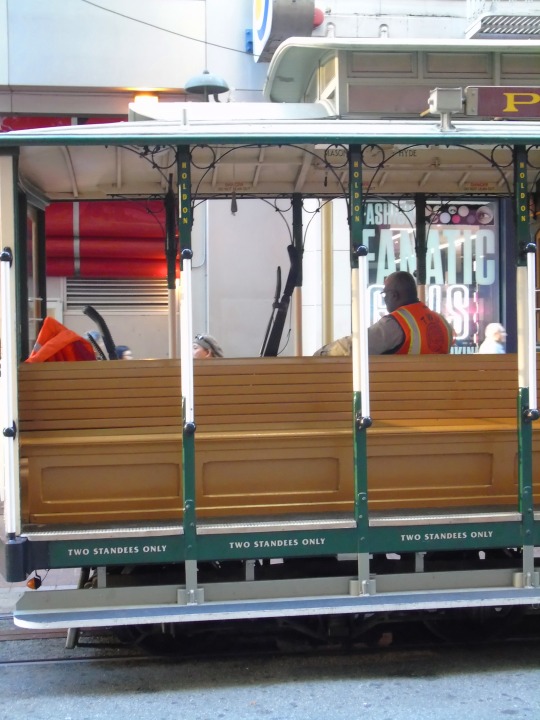


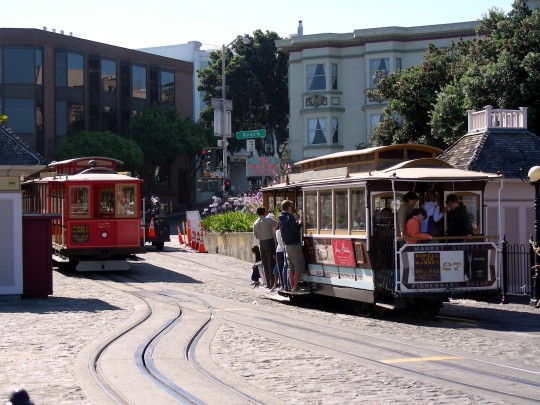



The Clay Street Hill Railroad began operating the first cable car in San Francisco’s famous cable car system on August 2, 1873 (or August 1, 1873).
#Powell Street#I really love the first pic#San Francisco#summer 2012#2017#2008#original photography#architecture#cityscape#too touristy#travel#never rode in one#vacation#street scene#California#tourist attraction#landmark#unclear date#first cable car#2 August 1873#1 August 1873#150th anniversary#US history#engineering
4 notes
·
View notes
Text

Galileo Chini (2 December 1873 - 23 August 1956)
4 notes
·
View notes
Text
The 2024 Resolution Post:
I normally have a huge amount of resolutions - I normally have 12.
My plan is normally along the lines of "the more I have the more likely I am to keep at least one"
and last year I actually kept a couple for at least 6 months.
I kept a daily diary for 3 months, and carried on a couple of times a week until about August.
I lost weight for about 4 months and then I gained it all back (all of it - I was 14 stone on 1/1/23 and I'm 13.13 on 31/12/23) and was quite lucky not to put more on.
I kept a TIGHT budget and was doing really fucking well until Soph moved in, which ate all my savings and put me on the back foot for a while. It's evening out now and 2024 she should be able to pay rent, which will help me SO much.
I stuck with my skincare plan for a couple of months but in all honesty, my skin just broke out a lot MORE and since I've gone back to the ol' water and occasionally using head&shoulders (the zinc is good for your skin, and it's working for me so far) I've had less breakouts.
I didn't use the keyboard once. It's a cute idea but not something I was actually willing to put time into when it came down to it.
I gave up fizzy drinks for like 2 hours. I crashed quick and gave up so fast I think I was the first person in 2023 to break a resolution.
I didn't leave the house at least once a week, and I didn't take better care of myself - physically or mentally.
HOWEVER, the big win for me in 2023 was sewing. I bought a new sewing machine and I've never sewn so many wearable things before. My crowing achievement has been the three pairs of jeans I've made and wear almost exclusively. It's the first time I've made things that I am so proud of and wear a lot.
So - for 2024 my resolutions are:
Get back on budget. My mental health is linked to money and bills in a huge way and when the money goes down, so does my mood. It is important that I maintain a decent cushion of cash (£300+) for emergencies.
Lose weight / Get fit - I'm putting these two together as it's linked for me. There are a couple of 'steps' to this one and it's a biggie, so the side quests are:
No eating at my desk
Use the gym membership
Figure out what is an excuse vs a reason. (am I sore or am I lazy?)
I do have a couple of sewing goals but those are more like fun projects I want to try and not like "GOALS" but I'd really like to make a 1873 bustle dress with the corset and fun stuff, as well as more 'everyday cosplay' that makes me feel fancy but in a daily wear item.
2 notes
·
View notes
Text
Whitechapel series 3 press pack
Whitechapel – Real life cases highlighted by Buchan in the series
Story 1
Ratcliffe Highway Murders The Ratcliffe Highway murders were two vicious attacks that resulted in multiple fatalities, and occurred over twelve days in the year 1811, in homes half a mile apart near Wapping in London.
The first attack took place on 7th December 1811 at a home behind a linen draper’s shop on Ratcliffe Highway (now called The Highway). The victims were Timothy Marr (a 24 year old linen draper and hosier), his wife Celia, their 3-month-old son Timothy and James Gowen, their shop boy. Margaret Jewell, a servant of the Marrs, had been sent to purchase oysters, and subsequently escaped. The murder caused the government to offer a reward of 500 guineas for the apprehension of the perpetrator.
Twelve days later on the 19th December, the second attack happened at The Kings Arms in New Gravel Lane (now Garnet street). The victims were John Williamson, 56 year old publican who had been at the Kings Arms for 15 years, his 60 year old wife Elizabeth and Bridget Anna Harrington in her late 50's, a servant. Williamson's 14-year-old granddaughter, Catherine (Kitty) Stillwell, slept through the incident and was thus not discovered. John Turner, a lodger and journeyman, discovered the murders and escaped out of an upper window, using a knotted sheet to climb down to the street below.
A principal suspect in the murders, John Williams (also known as Murphy), was a lodger at the nearby Pear Tree public house in Old Wapping. He was a 27-year-old Scottish or Irish seaman. He had nursed a grievance against Marr from when they were shipmates, but the subsequent murders at the Kings Arms remain unexplained. Williams was arrested, but committed suicide by hanging himself in prison; he was buried with a stake through his heart at the junction of Commercial Road and Cannon Street Road.
Charles Manson, 1969, Sharon Tate On the night of August 8, Manson directed Charles Watson to take Susan Atkins, Linda Kasabian, and Patricia Krenwinkel to "that house where Melcher used to live" and "totally destroy everyone in [it], as gruesome as you can." He told the women to do as Watson would instruct them. The current occupants of the house, all of whom were strangers to the Manson followers, were movie actress Sharon Tate, wife of famed director Roman Polanski and eight and a half months pregnant; her friend and former lover, hairstylist Jay Sebring; Polanski's friend and aspiring screenwriter Wojciech Frykowski, and Frykowski’s lover Abigail Folger, heiress to the Folger coffee fortune. Tate's husband, Polanski, was in London working on a film project; Tate had been visiting with him and had returned to the United States only three weeks earlier.
Richard Farley Richard Farley is an American convicted mass murderer. A former employee of Electromagnetic Systems Labs (ESL) in Sunnyvale, California, he stalked co-worker Laura Black for four years beginning in 1984. Black obtained a temporary restraining order against him on February 2, 1988, with a court date set for February 17, 1988 to make the order permanent. On February 16, 1988, Farley shot and killed seven people at ESL and wounded four others, including Black. He was convicted of seven counts of first degree murder, and is currently sitting on death row at San Quentin.
Story 2
The Thames Torso mystersties of 1887-1889 The Whitehall Mystery is an unsolved murder from London in 1888. The dismembered remains of a woman were found at three different sites in central London, including the future site of Scotland Yard. Newspapers suggested a tie to Jack the Ripper's killings of prostitutes that were occurring simultaneously, but the Metropolitan Police said there was no connection.
Mary Ann Cotton Born Mary Ann Robson in October 1832 in Low Moorsley, County Durham, she died 24 March 1873. She was an English woman convicted of murdering her husband and children and is believed to have murdered up to 21 people, mainly by arsenic poisoning.
Mary Wilson Killed four lovers with phosphorus and claimed they took it in‘sexual stimulation pills’s
Mary Wilson (c. 1893 - 1963) also known as the Merry widow of Windy Nook, was a serial killer and the last woman to be sentenced to death in Durham, in 1958. However the sentence was not carried out as it was commuted to a prison sentence.
An exhumation of the bodies of her last two husbands revealed high levels of phosphorus. Her defense claimed the substance was contained in their medication. Wilson was convicted of murdering two of her four husbands with beetle poison in 1956 and 1957. The remains of her earlier two husbands were exhumed at a later date and pointed to the same cause of death.
Dr Crippen Dr. Crippen, was an American homeopathic physician hanged in Pentonville Prison, London, on 23 November 1910, for the murder of his wife, Cora Henrietta Crippen. A theory, which was first propounded by Edward Marshall Hall, was that Crippen was using hyoscine on his wife as a depressant or an aphrodisiac but accidentally gave her an overdose and then panicked when she died.
The Lonely heart Killers Raymond Fernandez and Martha Beck, who met after Beck placed a lonely-hearts ad, became known as "The Lonely Hearts Killers" after their arrest and trial for serial murder in 1949. Between 1947 and 1949 they are believed to have killed as many as twenty women.
The Black Eyed Borgia and her Playboy lover Mary Frances Creighton and Everett Appelgate, both convicted and executed for the murder of Ada Creighton (Appelgate’s wife) from arsenic poisoning.
H.H.Holmes (May 16, 1861[1] – May 7, 1896), better known under the alias of Dr. Henry Howard Holmes, was one of the first documented American serial killers in the modern sense of the term. In Chicago at the time of the 1893 World's Fair, Holmes opened a hotel which he had designed and built for himself specifically with murder in mind, and which was the location of many of his murders. While he confessed to 27 murders, of which nine were confirmed, his actual body count could be as high as 250. He took an unknown number of his victims from the 1893 Chicago World's Fair, which was less than 2 miles away from his "World's Fair" hotel.
Marquis de Sade An episode in Marseille, in 1772, involved the non-lethal poisoning of prostitutes with the supposed aphrodisiac Spanish fly and sodomy with his manservant Latour. That year the two men were sentenced to death in absentia for sodomy and said poisoning.
Thomas Huskey, 1999 Knoxville, Tennessee Accused killer of 4 women in Tennessee. Nicknamed the "Zoo Man", Huskey worked at the Knoxville Zoo and allegedly took his victims here. He talked of ‘Kyle’, a separate, darker personality that was responsible for a series of murders.
Arthur Ford, 1954 Arthur Ford became infatuated with a woman called Betty Grant who worked in his office on Euston Road. He bought a coconut nice for both Betty and a friend that he had laced with cantharidin; both died after eating it.
Story 3
Bogeyman A bogeyman is an amorphous imaginary being used by adults to frighten children into compliant behaviour. The monster has no specific appearance, and conceptions about it can vary drastically from household to household within the same community; in many cases, he has no set appearance in the mind of an adult or child, but is simply a non-specific embodiment of terror. Parents may tell their children that if they misbehave, the bogeyman will get them. Bogeymen may target a specific mischief — for instance, a bogeyman that punishes children who suck their thumbs — or general misbehavior, depending on what purpose needs serving. In some cases, the bogeyman is a nickname for the devil.
Zodiac Killer Masked serial killer in California in 1960s/1970s who said that ‘hunting humans was the most exciting of all sports’
The Phantom US, 1940s. Killed on full moons, wore a white mask and attacked eight by the light of the moon. Of whom the sheriff said “no one sees him, no one hears him in time.”
Robert Williams The case of the man who killed a girl in Hyde Park in 1928. The man claimed that the film ‘London After Midnight’ sent him insane, and that he saw Lon Chaney in the park, forcing him to murder the girl with a razor.
Scared to death In 1840, Sir Robert Warboys had heard of a tale of a parlour maid who had seen the spectral presence and had been driven insane. He wanted to disprove the haunting, and armed with a shotgun, went to spend the night in the attic room. The house was woken at midnight when a shot rang out. They found Warboys dead from fright.
Then in 1878, Lord Lyttleton stayed the night. He loaded his gun with silver sixpennies said to ward off evil. For him it worked and he survived to tell the tale.
Couple on a spree together – Caril Ann Fugate and Charles Starkweather. Nebraska, 1957. Charles Starkweather and Caril Ann Fugate. They killed 11 in all. Including her parents and two year old sister. She was only 14 at the time. Nobody knows how many she killed. She said she was held hostage by Starkweather. He said she was a willing participant. He was executed in 1959. She was paroled in 1976. And to this day she has never spoken of the murders, so no one knows how involved she really was.
Tsuyama Massacre The Tsuyama massacre was a spree killing that occurred on 21 May 1938 in the rural village of Kaio close to Tsuyama city in Okayama, Japan. Mutsuo Toi, a 21-year-old man, killed 30 people, including his grandmother, with a shotgun, Japanese sword, and axe, and seriously injured three others before killing himself with the shotgun.
5 notes
·
View notes
Photo
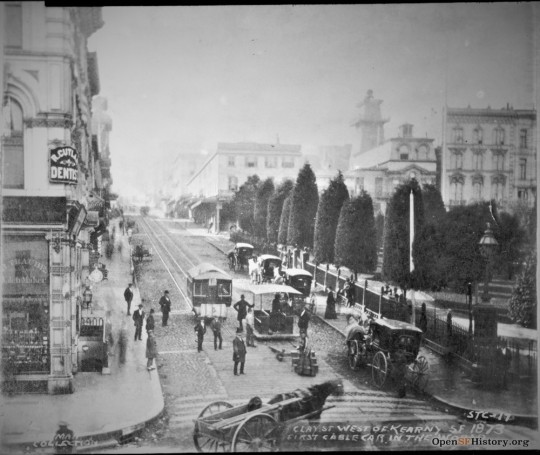
"Clay St. West of Kearny SF 1873 - First Cable Car in the World" In this elevated view west on Clay Street to the Clay St. Cable RR cable car at Kearny Street Terminus, Portsmouth Square can be seen on the right. Signage for the R. Cutlar Dentist, H. Traube watchmaker and jeweler at left. This photo is a detail from Carleton Watkins' stereo card number 2368 (Variant) under the original title: "Clay St. Hill R.R., San Francisco, Cal. Run by A.S. Hallidie's patent Endless Steel Wire Rope and Gripping Attachment. Overcomes an Elevation of 307 feet in a length of 2800 feet. Worst grade, one foot in six" (from the Marilyn Blaisdell Collection).
Chinatown at the Advent of the Cable Car
This year San Francisco marks the sesquicentennial of its cable car system. In the late 19th century, San Francisco experienced rapid urbanization and faced the challenge of its hilly terrain. Traditional horse-drawn streetcars struggled to navigate the steep inclines, necessitating an innovative transportation solution.
In the predawn hours of August 2, 1873, Andrew Smith Hallidie introduced the first successful cable car system in the world. The cable cars utilized an underground cable mechanism to propel the cars along tracks, overcoming the city's hilly landscape. This new mode of transportation revolutionized urban mobility and played a pivotal role in San Francisco's development.
Historian Phil Choy wrote about the Clay Street cable car terminus at Portsmouth Square as follows:
“Following Andrew S. Hallidie’s successful test-run of the first cable car on August [2], 1873, horse-drawn cars were replaced with a cable car on Clay Street. Thereafter, the Chinese called Clay Street ‘Mo Mah Lie Ch’eh,’ which literally means ‘no-horse-drawn-car’ [冇馬拉車; canto: “mou5 maa5 laai1 ce1″]. Starting from the top of Leavenworth Street, the line ended at a turntable at the bottom of Clay and Kearny Streets, to send the car back up the hill.”

California and Montgomery streets, c. 1889. Photographer unknown (from the Martin Behrman Negative Collection / Courtesy of the Golden Gate NRA, Park Archives). The view is west on California across Montgomery, as an Omnibus Railway Co. horsecar #11 passes the Parrott Building, or Parrott Block (1852, Architect Stephen Williams) seen in background. A Chinese man is walking south at the northeast corner of the intersection. The signs for the offices of Equitable Life and Dr. William F. McNutt at 405 Montgomery are visible at right.
The introduction of cable cars in San Francisco had a profound impact on the Chinese community. Several cable car lines conveniently passed through Chinatown, allowing Chinese residents to access transportation. The cable cars provided a reliable means of travel for the community, connecting them to other neighborhoods and employment opportunities initially for domestic workers serving the mansions atop Nob Hill and eventually throughout the city.

Clay Street Cable Car, c. 1873. Photograph by Carleton Watkins and published as “Pacific Coast. 2369″ and by Taber Photo (from the Marilyn Blaisdell collection). In this startling image, patrons and car operators can be seen posing on or alongside cable cars on Clay near Jones Street, except for at least two Chinese men seated in the car at left. Their faces were lost to history because one man placed his hat over his face, while the other inclined his head to avoid the camera’s lens. Watkins' image may be the only extant image showing urban pioneer Chinese actually riding an early cable car, possibly to their jobs as domestic servants for the mansions on Nob Hill.
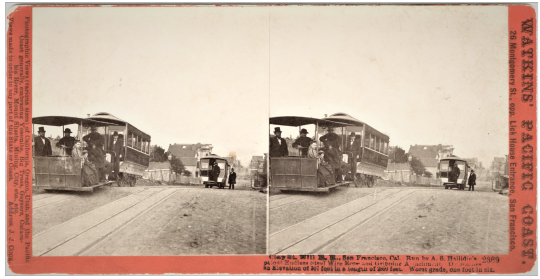
Watkins' stereo card bears the legend: “Clay Street Hill R.R., San Francisco, Cal. Run by A.S. Hallidie's patent Endless Steel Wire Rope and Gripping Attachment. Overcomes an Elevation of 307 feet in a length of 2800 feet. Worst grade, one foot in six. 2369” Photograph by Carleton E. Watkins (from the collection of the San Francisco Public Library).

“At the Corner of Dupont and Jackson Streets” c. 1896 -1906. Photograph by Arnold Genthe (from the Genthe photograph collection, Library of Congress, Prints and Photographs Division). A cable car on the Jackson Street line can be seen at right. “Two girls wearing embroidered holiday wear are crossing the street,” as historian Jack Tchen wrote in his book about Genthe’s Chinatown photos. “The store behind them is a ‘Chinese and Japanese Curios’ store located at 924 Dupont Street, southwest corner. The good-quality, expensive vases in the window display and the sign in English indicate that the store catered especially to tourists. Some such stores were owned by Japanese, but the main reason that both Chinese and Japanese goods were sold in the same store was that the general public could not distinguish between the two cultures.” (NOTE: Tchen’s location of the address at 924 Dupont appears incorrect, as the photo depicts the west or odd-numbered side of the street. The building bearing an address of 943 Dupont actually occupied the southwest corner of the intersection with Jackson Street. Directories of the time indicate that the Tong Yuen Lai confectionary operated at the 943 address during the 1890’s. By the 1905 publication of the Chinatown phone directory, the Jong Mee Cigar Store had either co-located or operated solely at the address.)
The cable cars, particularly the Clay, Sacramento, California, and Jackson street lines, had played a significant role in fostering economic growth within Chinatown.

“B 3096 Clay Street Hill, Chinatown, San Francisco” c. 1886. Photograph by Isaiah West Taber (from the Marilyn Blaisdell Collection). In this view east on the south side of Clay Street, and just above Dupont, the trees of Portsmouth Square can in the distance at left, a horsecar can be seen on Kearny and an original Clay Street cable car. The large billboard for Globe Business College and Conservatory of Music in distance. The large vertical sign in Chinese denotes an herbalist or apothecary store.

The view east on Clay Street, c. 1888. (Photographer unknown from the collection of the California Historical Society). A cable car is in the process of crossing Dupont Street and heading west up the hill. The balconies of the Yoot Hong Low restaurant appear at left.
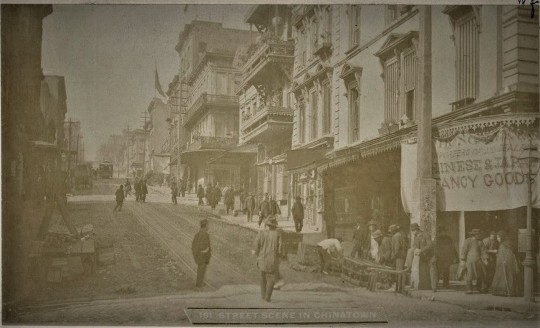
“161 Street Scene in Chinatown,” no date. Photographer unknown (from a private French collection). A cable car can be seen traveling west on Clay passing Stockton Street.

“Chinese Quarter, San Francisco, Cal.” c. 1891. Photograph by A.J. McDonald (from a private collection). A cable car is seen passing the 800-block of Clay Street between Dupont St. and Waverly Place. The decorated balconies of the Yoot Hong Low restaurant can be seen at center.

“B 2807 Lotta’s Fountain, and junction of Market, Kearny a& Geary Streets, S.F.” c. late 1880s. Photograph by Isaiah West Taber (from a private collection). A Market Street Cable Rail car appears in the right foreground. Two Chinese men can be seen in the background at left on the sidewalk between the two lampposts and under the Philadelphia Lager sign.

“Carrying New Year Presents” c. 1900-1905. Photograph by Arnold Genthe (from the Genthe photograph collection, The Library of Congress, Prints and Photographs Division). A cable car can be seen on the hill just behind the head of the young woman in the photo. She appears to have been a servant to the family of prominent merchant Lew Kan. The boy in the photo is Lew Bing Yuen, the older son, who also appears in Genthe’s well-known photo “Children of the High Class.”
After transformation of post-1906 Chinatown into the “Oriental City,” this urban transit network remained crucial the neighborhood’s integration with the citywide economy. Tourists and locals utilized the cable car system, and Chinese-owned businesses along, and in proximity to, the cable car lines experienced increased patronage. This urban mobility represented by the cable car system, even after its reduction to only two lines, has sustained the Chinese community from it pioneer beginnings to this day.

“San Francisco Cable Car Lines at the Fullest Extent of Operation (1890s)” (courtesy of the Cable Car Museum). As the Cable Car Museum advises here, “Clay Street Hill Railroad was the sole cable car company for 4 years. A former horsecar company, Sutter Street Railroad, developed its own version of Hallidie's patented system and began cable service in 1877, followed by California Street Cable Railroad -1878, Geary Street, Park & Ocean Railroad -1880, Presidio & Ferries Railroad -1882, Market Street Cable Railway -1883, Ferries & Cliff House Railway -1888, and Omnibus Railroad & Cable Company -1889.” At its peak, the San Francisco companies had laid “53 miles of track stretching from the Ferry Building to the Presidio, to Golden Gate Park, to the Castro, to the Mission.”

Published in Germany under the title “The Plaza, near Chinatown, San Francisco, U.S.A.” c. 1890. Photographer unknown (from the Marilyn Blaisdell Collection). In this northwesterly view toward the 700-block of Washington Street, a man walks a child through Portsmouth Square, and a cable car can be seen in the background. By the 1890s, a cable car line had been built on Washington Street, running along the northern edge of the square.
For the Chinese families who began to populate the eastern slopes of Nob and Russian Hills (and the garment workers in the small sewing factories along Pacific Avenue west of Stockton Street), the cable cars served as their principal transit system until the establishment of bus routes such as the Pacific Avenue shuttle (championed by Phil Chin and his Chinatown Transportation Improvement Project crew a half-century ago), and now known as the no. 12 Folsom/Pacific line.

A group of women (at least one of whom has bound feet) disembarks from a cable car in 1908. Photographer unknown (from the collection of the Chinese Historical Society of America). For women with bound feet (including great grandmothers on both sides of my family), the cars represented not only convenience but a necessary travel option for the residents navigating the hilly topography of San Francisco Chinatown.
The clang of cable car bells and the snap of the cable in the tracks remain an integral part of the soundtrack for the several generations of Chinese children who grew up in the greater Chinatown area.
Cable cars symbolized the vital role of urban transportation in fostering connections and opportunities -- providing convenient travel options for the residents of Chinatown, maintaining the neighborhood’s economy during hard times, and tying the segregated Chinese community to the larger city.
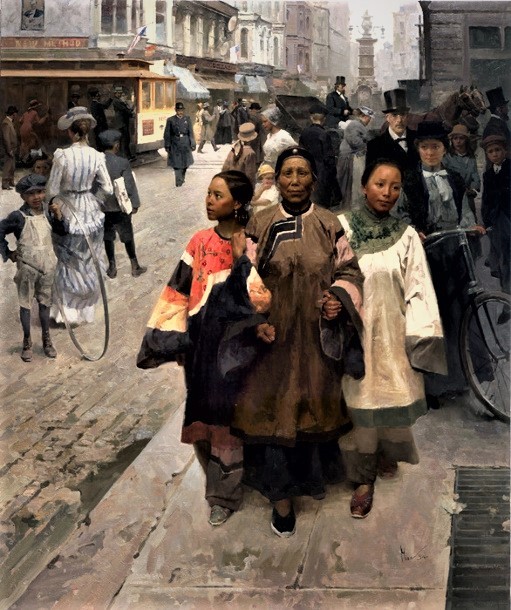
“Convergence of Cultures” oil painting by Mian Situ.
[updated 2023-8-14]
#Chinatown and the cable cars#Chinese riding 1873 cable car#Carleton Watkins#Andrew Hallidie#Clay Street cable car line#Chinatown Transportation Improvement Project#Lew Kan#Lew Bing Yuen#Sacramento Street cable car line#Jackson Street cable car line#Market Street Cable Rail line
4 notes
·
View notes